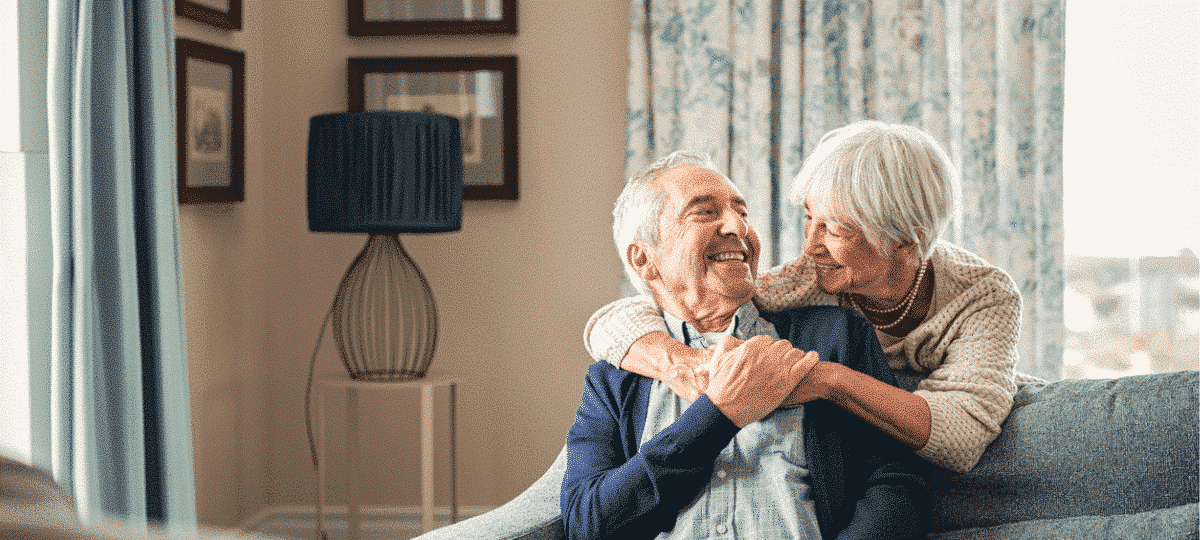According to the CDC, each year, about 3 million older adults are treated in emergency departments for a fall injury, and one out of every five falls causes an injury, such as broken bones or a head injury. Sadly, for many of them, returning home is no longer an option, as they end up relocating to assisted living communities or nursing homes due to the injuries sustained in the fall, their fear of falling, or their family’s concern about potential future falls.
The fear of falling is a significant factor that heightens the risk of a fall, especially among those who have experienced falls in the past. Addressing this fear head-on, both with the senior and their caregivers, provides the best chance to prevent or reduce the occurrence of falls. In addition to addressing the fear of falling, it’s essential to educate seniors and their families about other factors that can increase fall risk. These factors include declining visual acuity, muscle weakness, unsafe home environments, medications, and other age-related risks.
Strategies to help seniors living at home reduce their fear of falling and minimize fall risks:
Boost Confidence
Confidence is a key factor in reducing fear. Seniors can improve their confidence by focusing on enhancing their strength and balance. Specialized exercise classes and programs tailored to improving balance and strength are available. These classes often include assessments to gauge individual risk levels and demonstrate the effectiveness of exercises in reducing that risk. Local Area Agencies on Aging can provide information about classes in your area. For those unable to attend in-person classes, there are many online options available.
Create a Safer Home Environment
Assess the safety of the senior’s home and make necessary adjustments. The National Council on Aging offers tips for making homes safer for older adults. Here are some suggestions:
- Remove Throw Rugs: While decorative, throw rugs can be a tripping hazard. Consider removing them or securing them with non-slip backing or double-sided tape.
- Mark Steps with Bright Tape: Apply bright-colored tape to the edges of steps to improve visibility, especially in dimly lit areas.
- Tighten Loose Carpets: Ensure wall-to-wall carpets are secured to prevent tripping.
- Install Handrails: Check existing stair railings for stability and install new ones where needed.
- Improve Lighting: Add or replace lights in dim areas, both indoors and outdoors, to enhance visibility.
- Install Grab Bars: Install grab bars in slippery areas like the bathroom and encourage their use for support.
Other Considerations to Discuss with Seniors and Their Families
- Reposition Furniture: Rearrange sturdy furniture to provide support in areas where handrails are not feasible.
- Remove Access Barriers: Ensure easy access to items like curtain pulls, light switches, and telephones.
- Consider Bed Rails: If getting in and out of bed is a concern, consider under-the-mattress side rails for added support.
- Clean Up Spills: Promptly clean up spills and thoroughly dry the area to prevent slipping.
- Review Medications: Keep a close eye on medications, especially new ones, as they can impact fall risk. Avoid polypharmacy by having a pharmacist review the complete list of medications to identify any potential conflicts.
Choose Safe Shoes and Clothing
Poorly fitting shoes and clothing can contribute to falls. Pay attention to the following:
- Avoid High Heels: Shoes with heels over half an inch, mules, sandals without back closures, and ill-fitting shoes should be avoided.
- Check Clothing Fit: Ensure clothing fits properly to prevent tripping hazards.
- Adapt to Weight Changes: Address changes in weight that may affect clothing fit.
- Consider Assistive Devices: Walkers, canes, and other aids can help reduce the fear of falling. Ensure these devices are properly fitted and educate seniors on their correct usage.
Know What to Do After a Fall
Seniors should remain calm and assess their condition after a fall. The National Institutes of Health offers guidelines on how to get up safely. Consider a medical alert system with fall detection for quick access to help if needed.
While it’s impossible to prevent all falls, taking proactive steps to address the fear of falling and minimize risk factors can help seniors maintain their confidence and independence while living safely at home.

